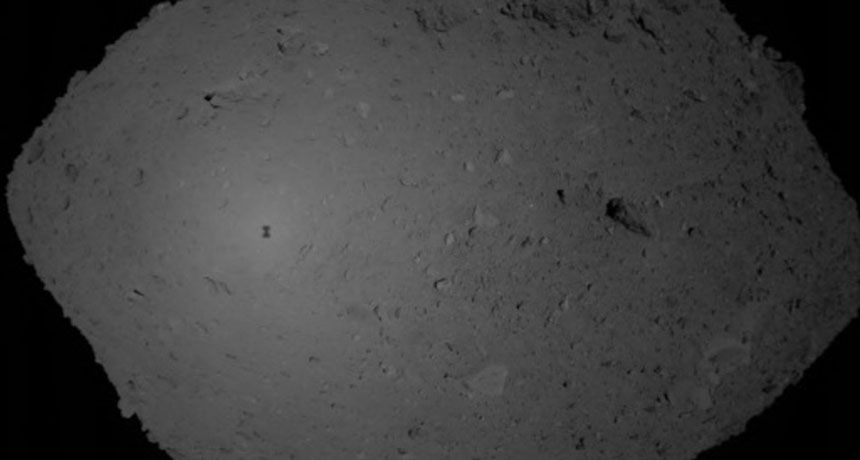Hayabusa2 just tried to collect asteroid dust for the first time
The Japanese spacecraft will eventually return to Earth, hopefully hauling a sample of Ryugu

LOOK OUT BELOW The shadow of the Hayabusa2 spacecraft (small black dot to the left) is visible on the surface of asteroid Ryugu in this image, taken shortly before the spacecraft touched down on Ryugu’s surface for the first time.
JAXA







